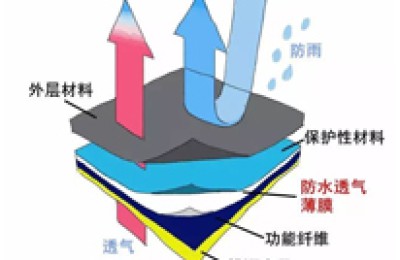Peru, a country on the other side of the ocean and 16,000 kilometers away from China, looks like a neighboring country to China. Chinese Peruvians, who account for more than 10% of the total population of Peru, hold a high status in Peruvian society, and many Peruvians have Chinese blood. On the streets of Peru, Chinese restaurants and Chinese goods are everywhere, and the eating habits of Peruvians are even deeply influenced by the Chinese.
However, in the past year, due to the impact of cheap Chinese clothing on the country’s clothing industry, the Peruvian government is increasing its efforts to investigate and deal with illegal activities such as clothing smuggling and low-price customs declarations. These clothing mainly come from China.
From recent reports in the Peruvian media, we learned that on the 17th of this month, the Peruvian Customs and Tax Administration (SUNAT) seized a ton of 41 packages of smuggled Chinese second-hand clothing, which were stored in a secret warehouse in the Victoria District of Lima. was discovered in.
The above-mentioned clothing is prohibited from sale because it contains germs and mites that can make people sick. The value of the goods exceeds 25,000 soles. It is reported that the small traders engaged in illegal sales of the above goods have fled the scene.
Recently, due to pressure from Peruvian domestic clothing manufacturers on the government, the government is increasing its efforts to investigate and deal with illegal activities such as clothing smuggling and low-price customs declarations. These clothing mainly come from China. Previously, Peruvian authorities also confiscated a batch of counterfeit brand clothing at the largest clothing wholesale and retail market in Lima.
Peru is a South American country that is 16,000 kilometers away from China on the other side of the Pacific Ocean, but it looks like a neighbor of China.
According to a report from the “Global Times” on October 2: When reporters recently visited Peru for interviews, they were greeted by a strong “Chinese style”: Chifa (the transliteration of the Chinese word for “eating”) hung all over the streets in the capital Lima. ) and small restaurants with Chinese character signboards, Chinese products are everywhere in the market, and the faces that look similar to those of East Asians make people feel like “fellow villagers meet fellow villagers”. However, there are also some minor contradictions behind the sense of intimacy. The low prices of Chinese clothing have affected the jobs of some Peruvians. The burning of Chinese clothing among the people and the government’s anti-dumping investigation are testing the trade between China and Peru. Many Peruvian insightful people say that Peru should take advantage of the impact of manufacturing in China to enhance its competitiveness, and Chinese companies should also consider how to solve the employment problem of local people.
More than a hundred years ago, a large number of Chinese people crossed the ocean and arrived in Peru to build railways and develop agriculture. In the lobby of the China General Administration of Trade and Benefit in Lima’s Chinatown, the reporter saw a horizontal plaque inscribed by Emperor Guangxu of the Qing Dynasty that read “Trade and Benefit Industry.” According to Xiao Xiaoquan, chairman of the China General Administration of Tonghui, this was the only time Emperor Guangxu inscribed a plaque for the Overseas Chinese Society. The Chinese in Peru have experienced a rather difficult development history. Today, they account for more than 10% of the total population of Peru, and many of them have become political and business elites. Xiao Xiaoquan said that the efforts of the Chinese and the strength of the motherland are the fundamental reasons why they win respect. Many Chinese Peruvians are proud that the Chinese have changed the eating habits of Peruvians. “Chaufa (fried rice)”, “Wantan (wonton)”, etc. are all pronounced according to Cantonese and squeezed into the Peruvian Spanish dictionary. Among the thousands of Chinese restaurants in Lima, there are more Peruvian customers than Chinese, and local diners must have a large plate of fried rice and a plate of fried rice noodles on their table.
What is most likely to make people feel good is the inseparable “blood connection” between this country and China. This emotional intimacy has brought many benefits to the political and business exchanges between the two countries. Many people from Chinese companies investing in Peru say that Peruvians like the Chinese from the bottom of their hearts and understand the Chinese way of doing things and traditional culture. In addition, there are many people with Chinese ancestry, making communication even more convenient. Currently, China is Peru’s largest trading partner, largest export market and second largest source of imports, and Peru is China’s seventh largest trading partner in Latin America.
As soon as they arrived in Lima, the reporter heard that Chinese clothing was burned in the Gamala Market at the end of August. On September 5, some people took to the streets again, demanding that the government strictly investigate Chinese clothing illegally entering Peru. When the reporter walked into the bustling Gamala Market, he could actually find small commodities such as sewing boxes, various types of hairpins, and safety pins that are not common in China. Even the prices were similar to those in small markets in China. In this clothing and small commodity market, which is the largest in South America, many of the products sold by tens of thousands of merchants are “Made in China.” But what puzzles reporters is that some merchants seem to be disgusted with cheap Chinese goods. In a clothing store with an area of about six to seven square meters, the shop owner Perpetua, who is in her 30s, said that she did not participate in the burning of Chinese clothing, but she was afraid of harming herself, so she closed the business for a day. She believed that “those are a small group of people.” initiated because they were afraid of competition.”
Local Chinese businessmen told reporters that those who are afraid of competition are some Peruvian businessmen who mainly open garment factories. They are very sensitive to the price of Chinese clothing. Peruvian official data shows that from 2005 to 2012, a total of 14,000 clothing and textile factories in Peru closed and 94,000 people lost their jobs.
Whether it is Peruvian national scholars or local Chinese businessmen, they all mentioned that while Chinese products are constantly expanding their markets in developing countries, they need to consider how to resolve their employment problems. Specific methods include establishing local factories and developing products through cooperation.license, provide technology, establish a vocational training system, etc. More importantly, Chinese companies should be encouraged to develop products that cannot be produced in South American countries and avoid product similarity. The electric mosquito swatters that reporters saw in the markets of Peru, Brazil and other South American countries are such products. These small commodities not only fill the local market vacancies, but also do not have the risk of anti-dumping or countervailing like traditional products such as textiles, so they have Great market potential.
When Chinese companies encounter anti-dumping and other trade protection measures, they should also actively respond to the lawsuit, argue with reason, and safeguard their rights and interests. The Economic and Commercial Office of the Chinese Embassy in Peru recently stated its position on Peru’s launch of an anti-dumping investigation on Chinese clothing and other products, saying that Peru’s anti-dumping measures may cause a decline in China’s textile exports to Peru, which is not only detrimental to the normal development of trade between the two countries, but also detrimental to the normal development of trade between the two countries. It will not be beneficial to Peruvian consumers, but will not be of positive significance to the Peruvian garment industry in the long run.





